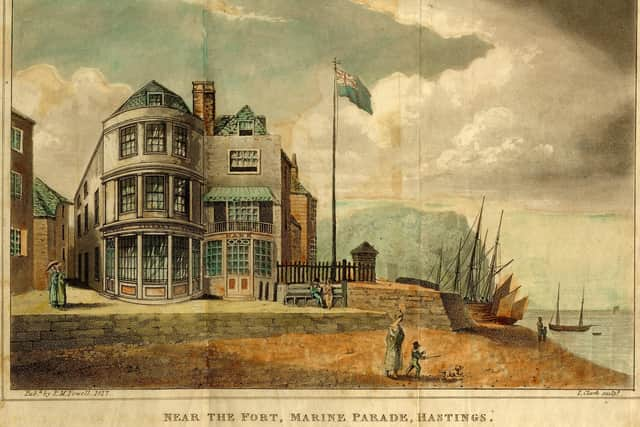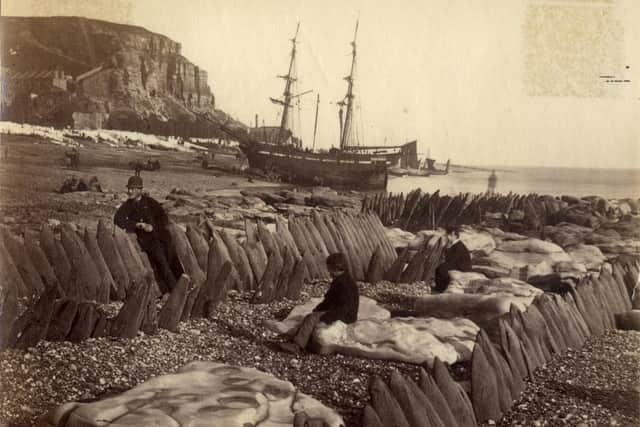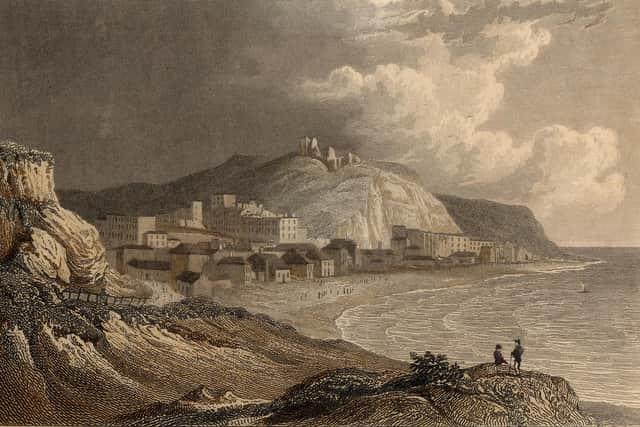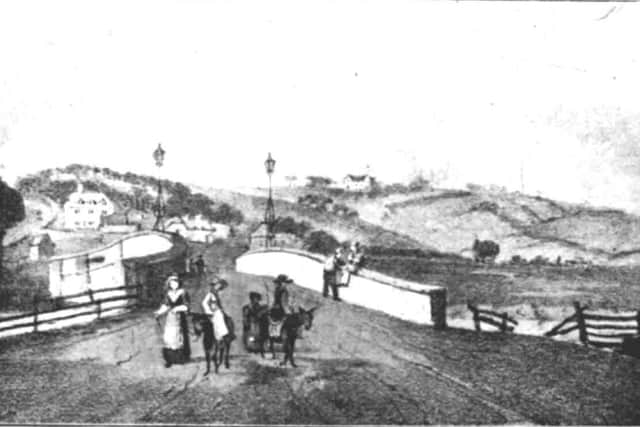John Banks was a remarkable Hastinger who wrote the book on smuggling
This article contains affiliate links. We may earn a small commission on items purchased through this article, but that does not affect our editorial judgement.
and live on Freeview channel 276
This pocket sized volume, 160 110mm x 175mm pages (including 16 pages advertising Hotten’s other publications) with a hard cover is a little unusual in that it has no pictures. John Banks’ own, 1873 preface, tells us why it was published
“I do not know that any explanation is needed for the writing of this book. Doubtless there are many who think that the memory of the practice of smuggling, and the doings of the smugglers, should be allowed to die out. Perhaps they are right. I cannot, however, help thinking that it is well that we should sometimes look back upon past events, particularly when they present such a striking contrast to the present state of things, as illegal “free trade” does to “free trade” authorized by law. This is part of my apology.
Advertisement
Hide AdAdvertisement
Hide AdThe remaining part may be understood from the following :-Being requested some eight or ten years ago to give a lecture to the members of the Hastings Mechanics’ Institution, it occurred to me that the subject of Smuggling as it existed some fifty years previous, would not fail to be interesting; nor was I mistaken. The Lecture was well received, and was delivered at three or four local Institutions. I afterwards supplemented it by another, on “Hastings Fifty Years Ago.” This was also well received. Since then I have collected many facts from eye-witnesses, and have re-delivered the Lecture some ten times, illustrated by dissolving views, representing incidents in a “ smuggler’s career.” This book has resulted from the lecture; and I now venture to launch it upon the world, trusting to fortune as to whether the “venture” be a successful one or not. I will merely add, that the book has been compiled in the intervals of a laborious and onerous profession, which will perhaps account for its many imperfections.”


Dissolving views are where one lantern slide image appeared to fade away, while another as gradually took its place, an effect created by two lanterns with shutters and was developed by English showman Henry Langdon Childe (1781-1874) who worked from 1807, completing his method in 1818. The Music Hall was above the Mechanics Institute and was also known as “the public hall”, later to become the Public Hall Cinema, later the Plaza’ then Orion’. then WH Smith absorbed the cinema before the whole lot changed hands and became Yates Wine Lodge.
John Banks, known as “The Old Schoolmaster” was born in Russell Court, just off George Street in 1807, his father was a blacksmith, who worked hard and drank hard but took care that all his children benefitted from as good an education as could be got in the schools of that day. Banks tells us that his father had added to his income by acting as a “looker-out” for the smugglers and had often assisted them. Their house, (since demolished), had a large oven, a large closet in one of the bedrooms, and a disused pigsty in the backyard with an excavation under it which were used to conceal smuggled goods.
In 1844, Banks became second master at the new Hastings Proprietary Grammar School in Hill Street. Four years later he was appointed to the mastership of Parker’s stayed there for 30 years until the school was reorganised. He saved and eventually built a new school, Bleak House, in Stonefield Road (the building is still there at the top of Portland Steps) and raised Parker’s to a very high standard of respect in the town and his teaching of navigation was well-known.
Advertisement
Hide AdAdvertisement
Hide AdEarly in 1878 Parker’s, Saunders’ and part of the Magdalen Charities amalgamated under the name of the Hastings Grammar School and their first action was to arrange for the retirement of the old schoolmaster, John Banks, on a pension. Banks’ many outside interests included land surveying and from 1833 onwards he was kept busy producing a large number of maps and plans of the town required by the Improvement Act of 1832.


For many years kept the weekly weather record that was printed in the local paper and recorded one of the wettest days in the history of the town (June 28th, 1861) when over 2 inches (over 50mm) of rain fell and parts of the town were flooded.
The Hastings Mechanics’ Institution opened in 1834 and Banks was involved with it for the rest of his life, on the committee, for a long period as secretary and also as president. He lectured on all manner of scientific subjects from chemistry to astronomy. “Without the least pretension to eloquence or finished rhetoric, he stands before his audience a plain-speaking man, thoroughly understanding his subject and telling his hearers in plain Saxon what he knows”.
He formed the first local museum although the contents were later dispersed. He took part in the early days of a similar institute at St. Leonards, and helped to arrange an exhibition of works of art and models of inventions at the St. Leonards Assembly Rooms in 1853 (The Masonic Hall) that included many of his own exhibits and diagrams.
Advertisement
Hide AdAdvertisement
Hide AdWhen the Hastings Philosophical Society was formed in 1858 Banks was one of the founder members and no local scientific gathering would have been complete without him, he had supported the Volunteer movement from its formation in 1852 and became Band Major in the Hastings Rifles. His knowledge of accountancy found him in demand as auditor by many local companies, while he acted as actuary to the Hastings Savings Bank until it was absorbed by the Post Office Savings Bank.


He died at his home on June 3rd, 1882, after fitting generations of Hastings boys to take their places in the world. His whole life had been spent in the town, and all the local papers lamented his passing with affection.
The book is now considered the main reference work on smuggling in the Hastings area and most other published accounts on smuggling are based on it and some of their meeting places are noted - the limekilns at Warrior Square, Cuckoo Hill and Wellington Square, Bucks Hole, Smugglers’ Hole not far from Newgate Wood, Shepherd’s Hole, Shepherd’s Barn and Iron Latch Gate near the Grove, Dunn’s Barn on the Blacklands estate, Gensing Barn and the Toot Rock in Pett Level but the book also includes Banks’ first-hand recollections of the Hastings of the 1820’s and 1830’s.
Banks listed the nearly 40 of the dissolving views’ that illustrated his talks; many were contemporary representations of smugglers, smuggling vessels and confrontations with the revenue men, but he lists images of Hastings similar to those displayed here.
Advertisement
Hide AdAdvertisement
Hide Ad

Have you read....: 8 old pictures of Eastbourne landmark, the Redoubt Fortress
For the latest breaking news where you live in Sussex, follow us on Twitter @Sussex_Worldand like us on Facebook @SussexWorldUK